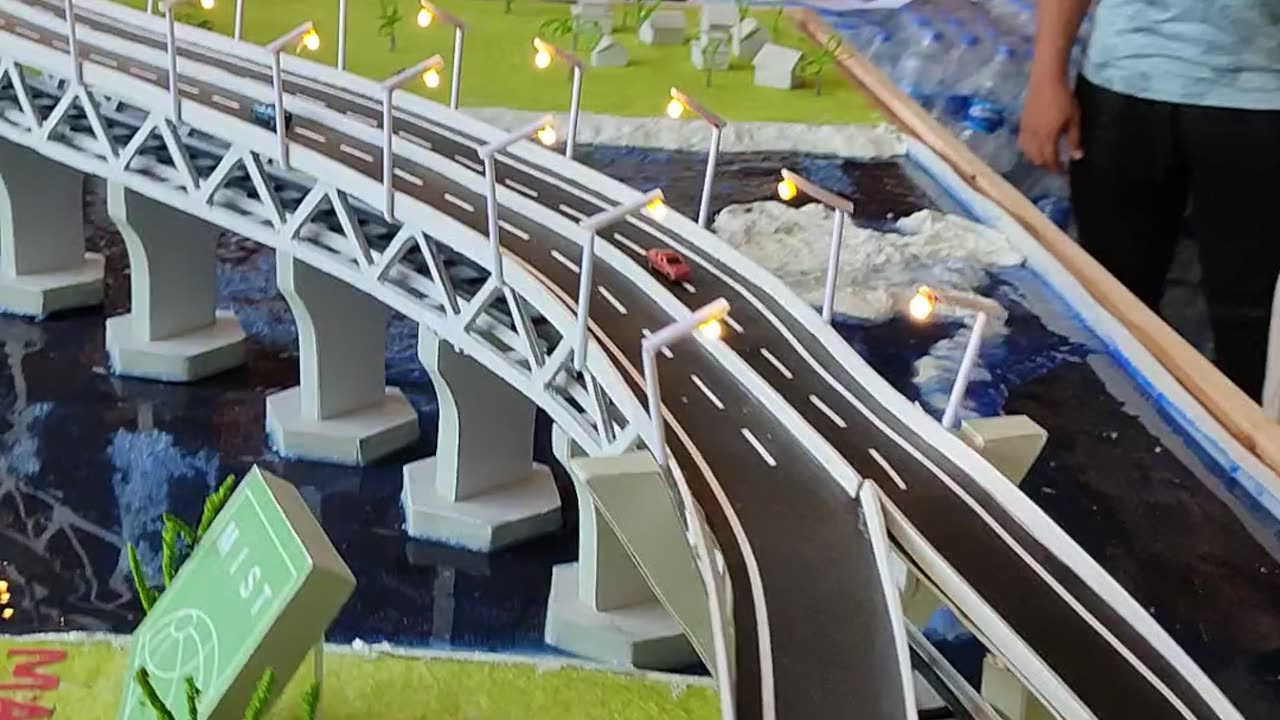Premium Only Content

Creating a technical bridge
A bridge is a structure designed to span physical obstacles, such as rivers, valleys, or roads, and provide a passage over them. Bridges can be constructed of various materials, including steel, concrete, wood, or stone, and their designs can vary widely depending on their purpose and location.
Bridges can be classified into several types, such as beam bridges, arch bridges, suspension bridges, cable-stayed bridges, and truss bridges. Each type of bridge has its unique features and characteristics that make it suitable for particular situations.
Beam bridges are the simplest and most common type of bridge, consisting of horizontal beams supported by vertical columns or piers. Arch bridges use curved arches to support the weight of the bridge deck and distribute it evenly across the bridge's abutments. Suspension bridges use cables suspended from towers to support the bridge deck, while cable-stayed bridges use cables that are anchored directly to the bridge's piers or towers.
Truss bridges are a type of beam bridge that uses a framework of interconnected triangles to distribute weight and provide support. Truss bridges can be further classified into several subtypes, such as Pratt truss, Warren truss, and Howe truss, based on their specific truss designs.
Bridges play a crucial role in transportation infrastructure, enabling people and goods to move over waterways and other obstacles efficiently and safely. They are also often architectural and engineering marvels, attracting visitors from around the world who appreciate their aesthetic and functional qualities.
-
 2:13:55
2:13:55
Tundra Tactical
7 hours ago $11.59 earnedTundra Talks New Guns and Remembers Charlie Kirk On The Worlds Okayest Gun Show Tundra Nation Live
37.7K4 -
 1:45:08
1:45:08
DDayCobra
9 hours ago $37.97 earnedDemocrats Caught LYING Again About Charlie Kirk's KILLER
72.8K80 -
 19:23
19:23
DeVory Darkins
11 hours ago $16.74 earnedShocking Update Released Regarding Shooter's Roommate as Democrats Issue Insane Response
52.1K158 -
 19:53
19:53
Stephen Gardner
13 hours ago🔥EXPOSED: Charlie Kirk Shooter's Trans Partner Tells FBI EVERYTHING!
67.8K324 -
 2:47:25
2:47:25
BlackDiamondGunsandGear
8 hours agoAfter Hours Armory / RIP Charlie Kirk / What we know
44K6 -
 29:09
29:09
Afshin Rattansi's Going Underground
1 day agoThe Political Life of Malcolm X: Busting the Myths (Prof. Kehinde Andrews)
53.4K13 -
 2:47:25
2:47:25
DLDAfterDark
8 hours ago $6.32 earnedThe Assassination of Charlie Kirk - Just What We KNOW
32.8K7 -
 1:33:56
1:33:56
MattMorseTV
9 hours ago $40.89 earned🔴Exposing his PARTNER IN CRIME.🔴
86.8K288 -
 1:26:51
1:26:51
vivafrei
14 hours agoCharlie Kirk Assassination - When Peaceful Discussion Becomes Impossible - With Jose Vege
107K253 -
 2:04:12
2:04:12
Mally_Mouse
1 day ago🌶️ 🥵Spicy BITE Saturday!! 🥵🌶️- Let's Play: Supermarket Together
53.3K3